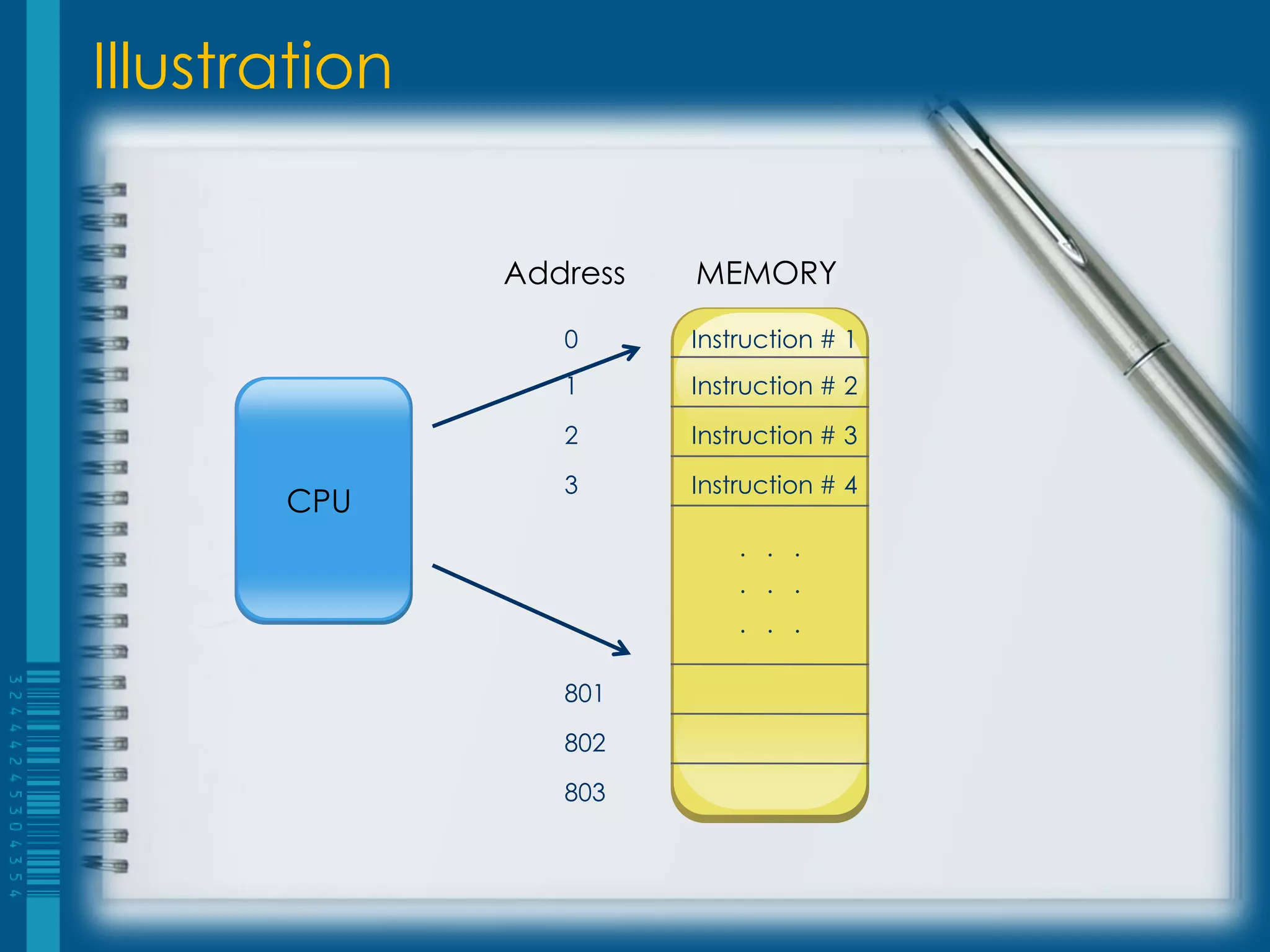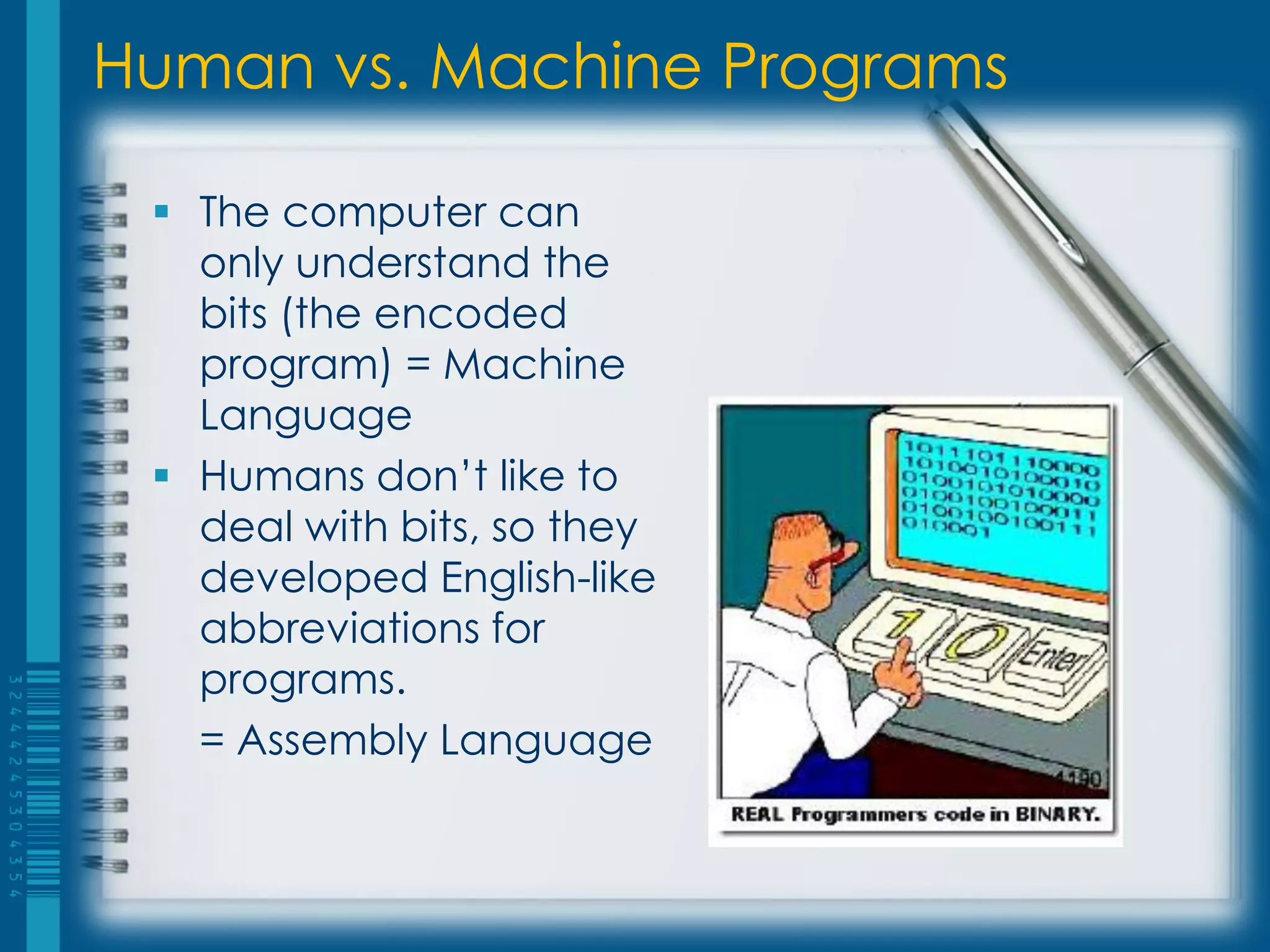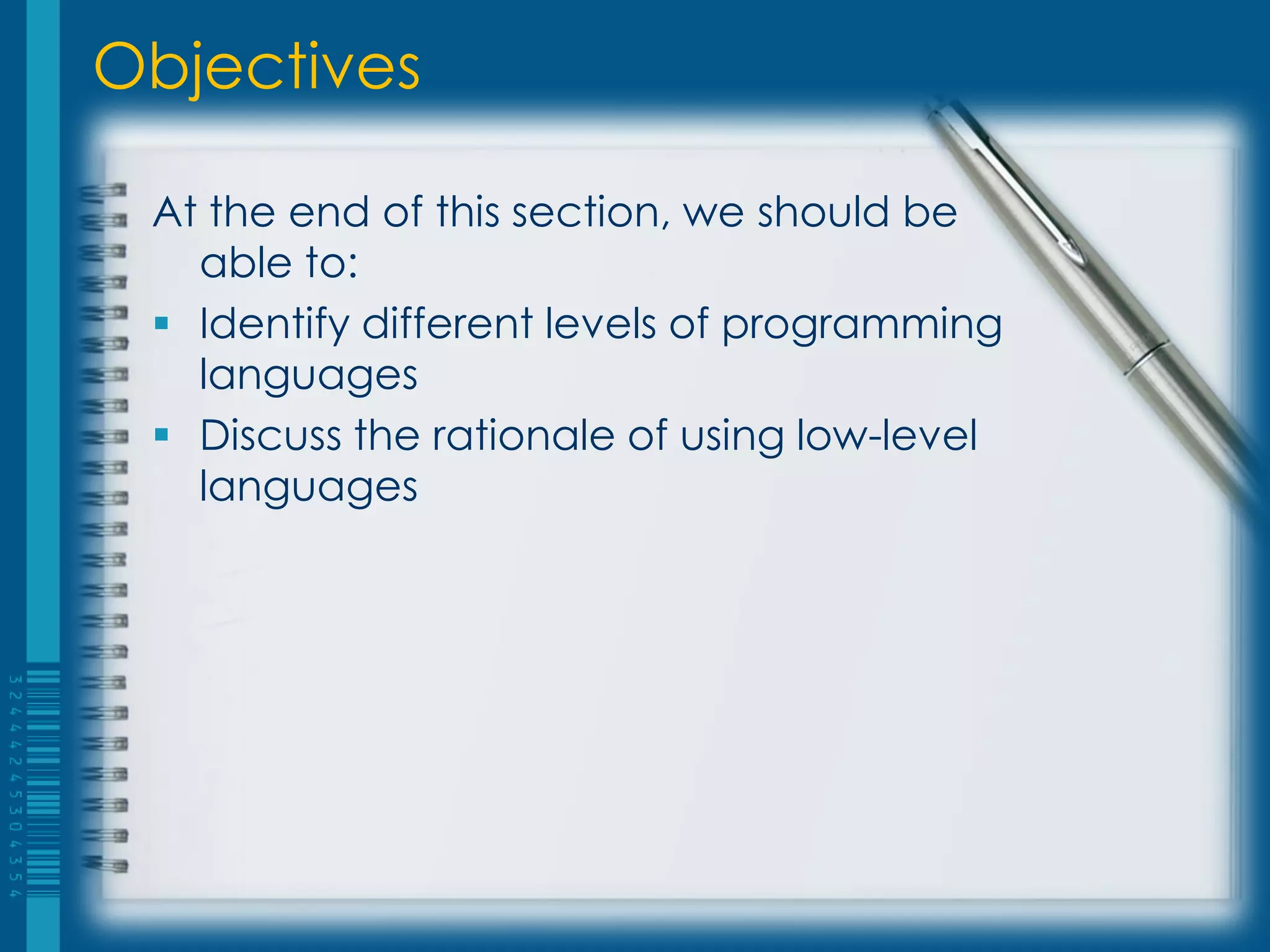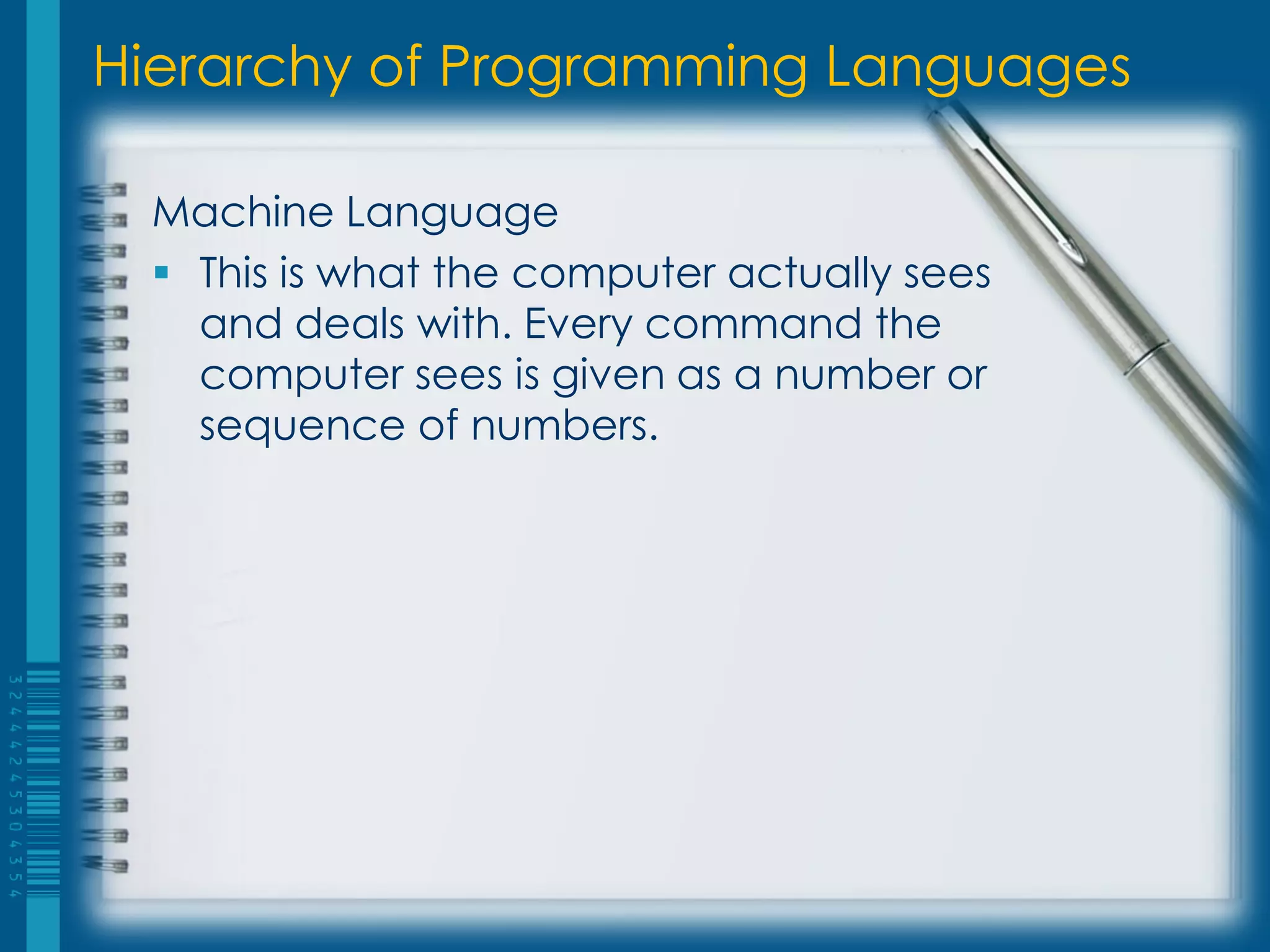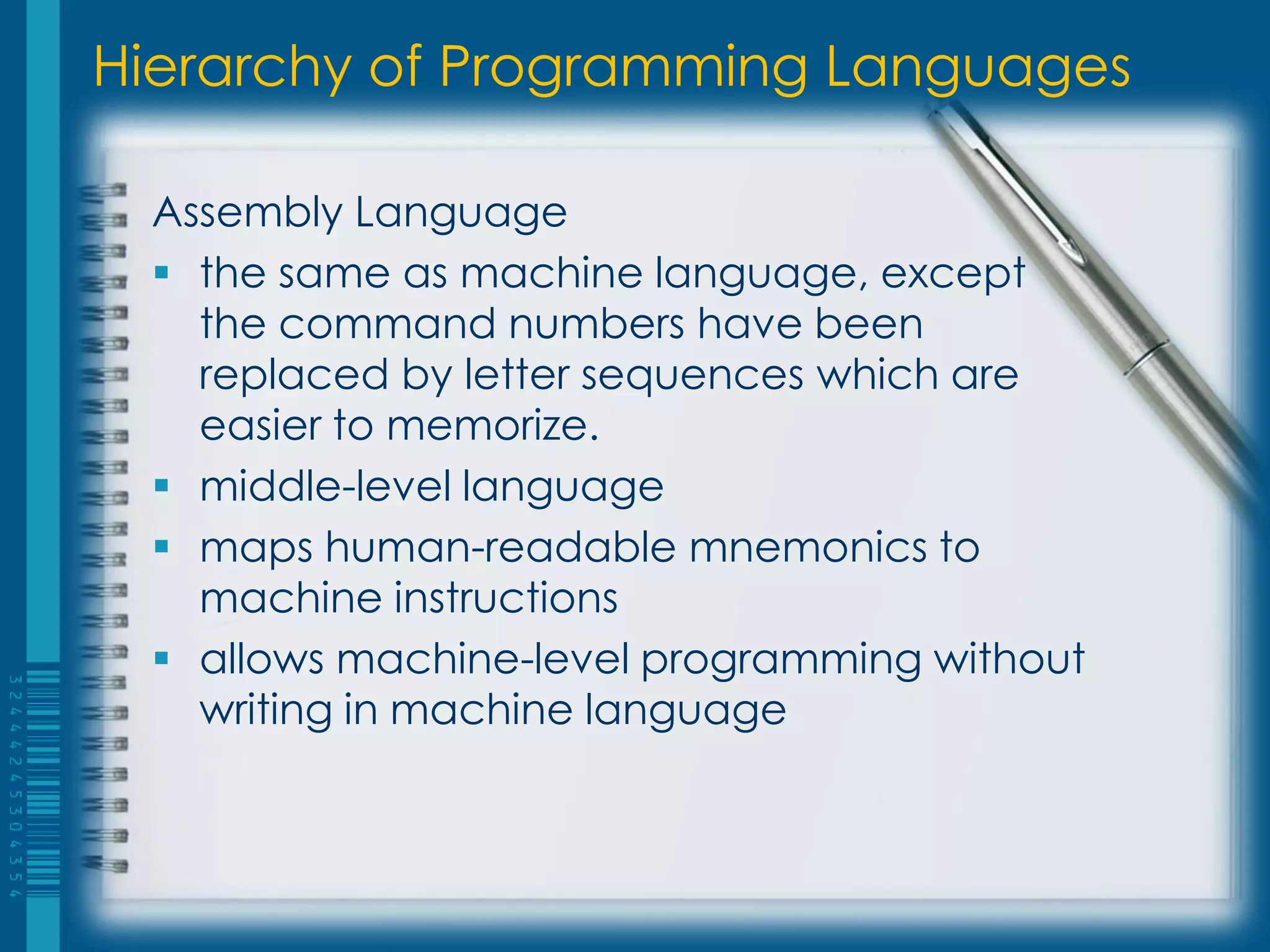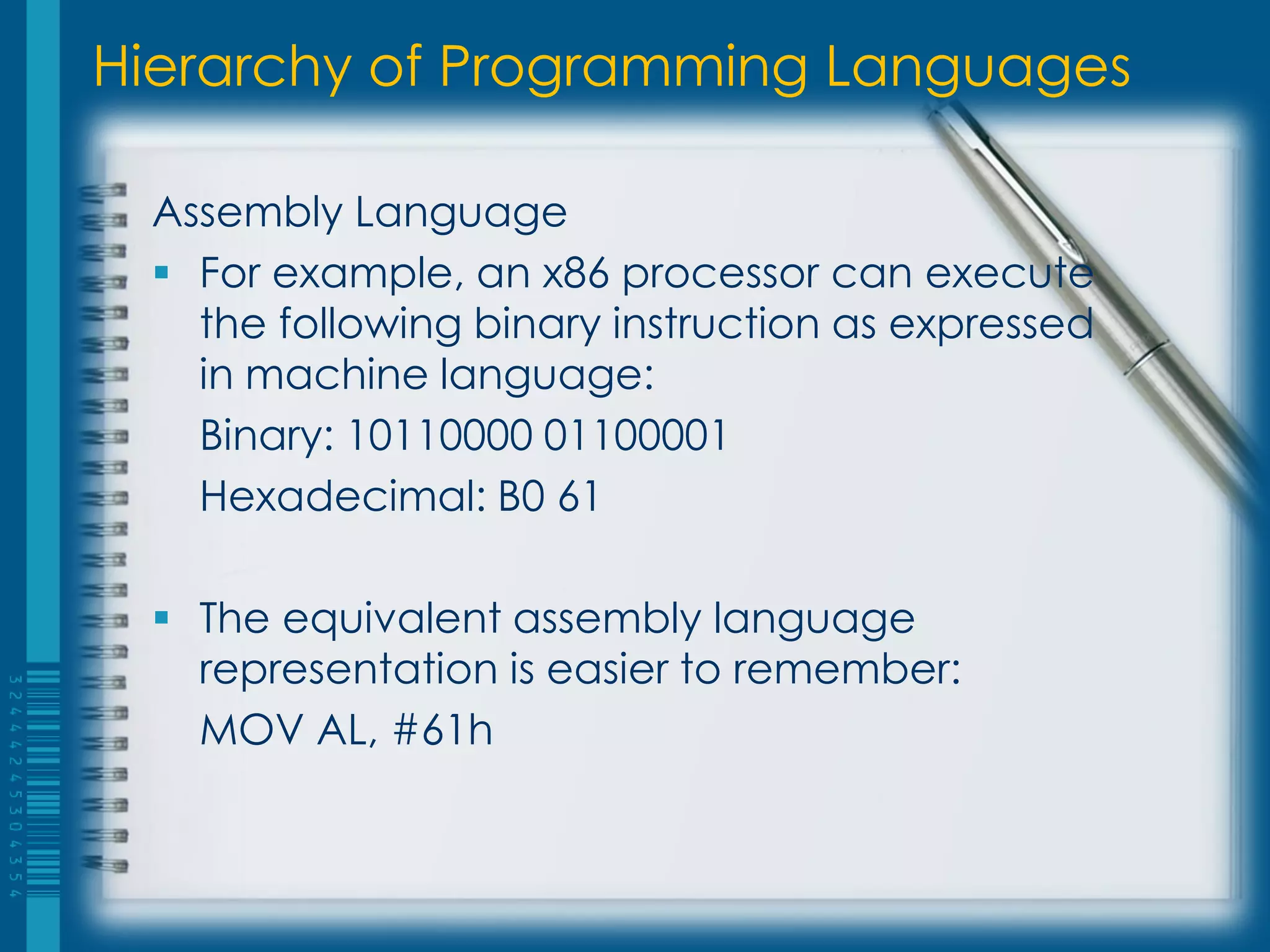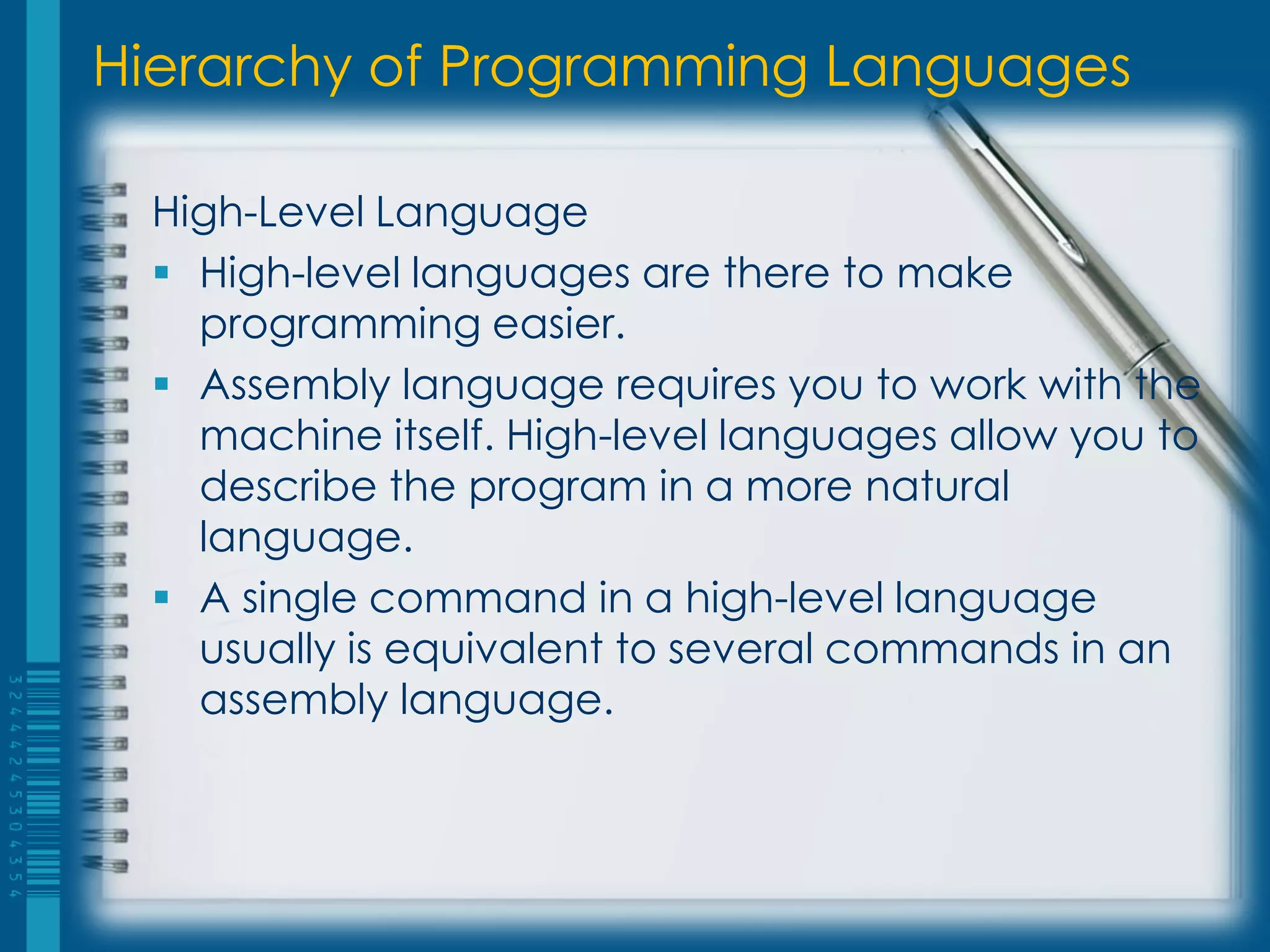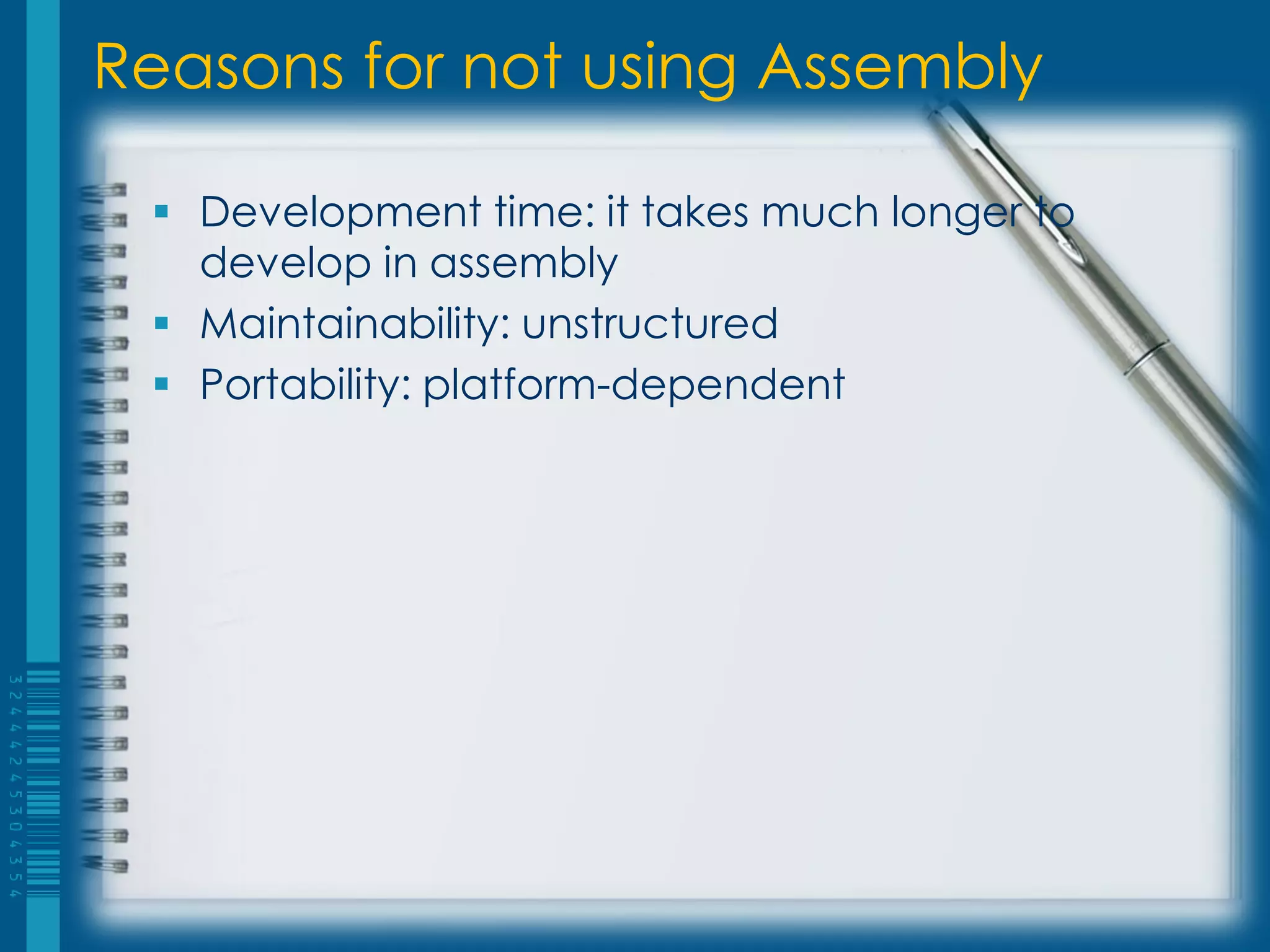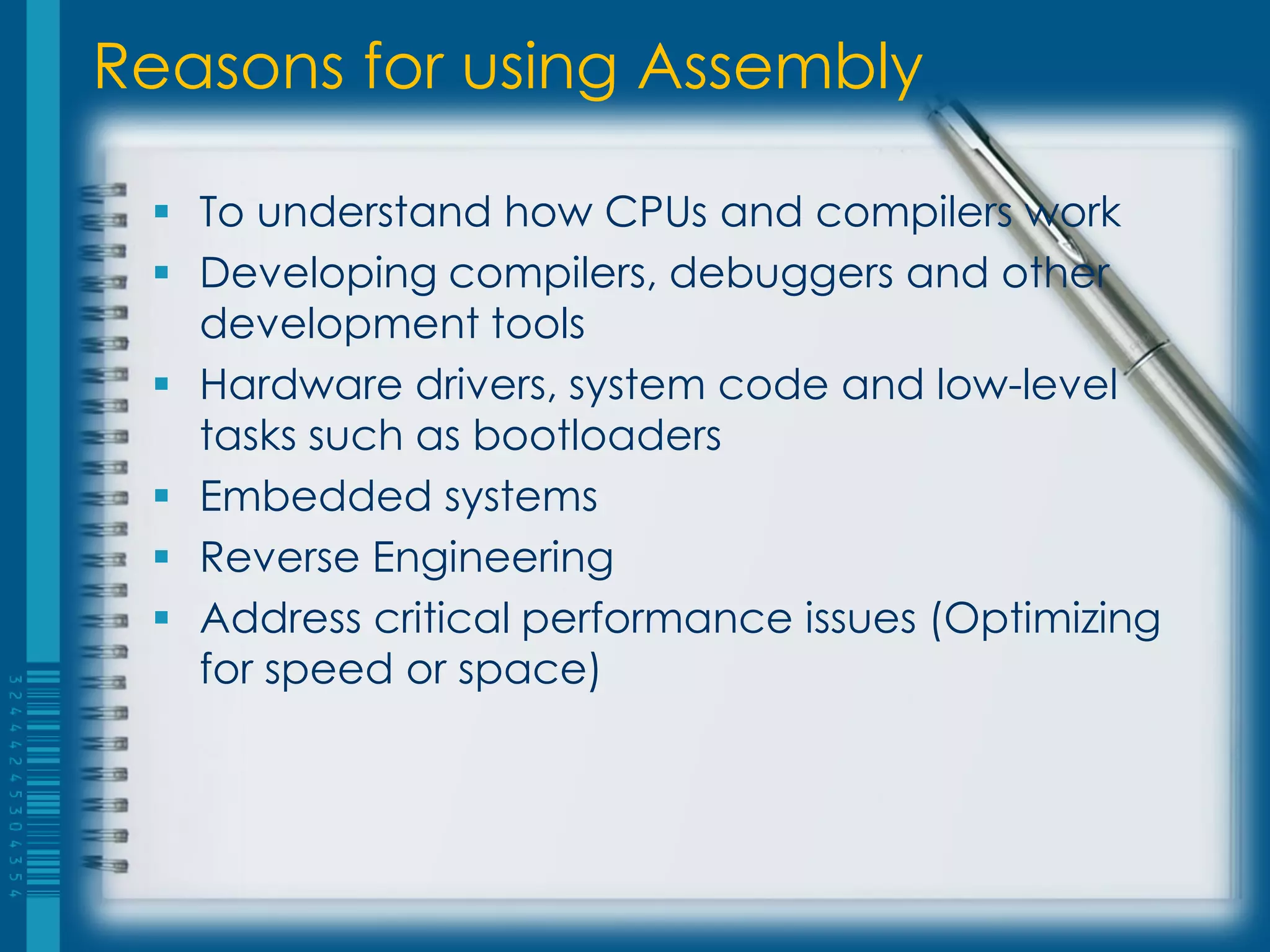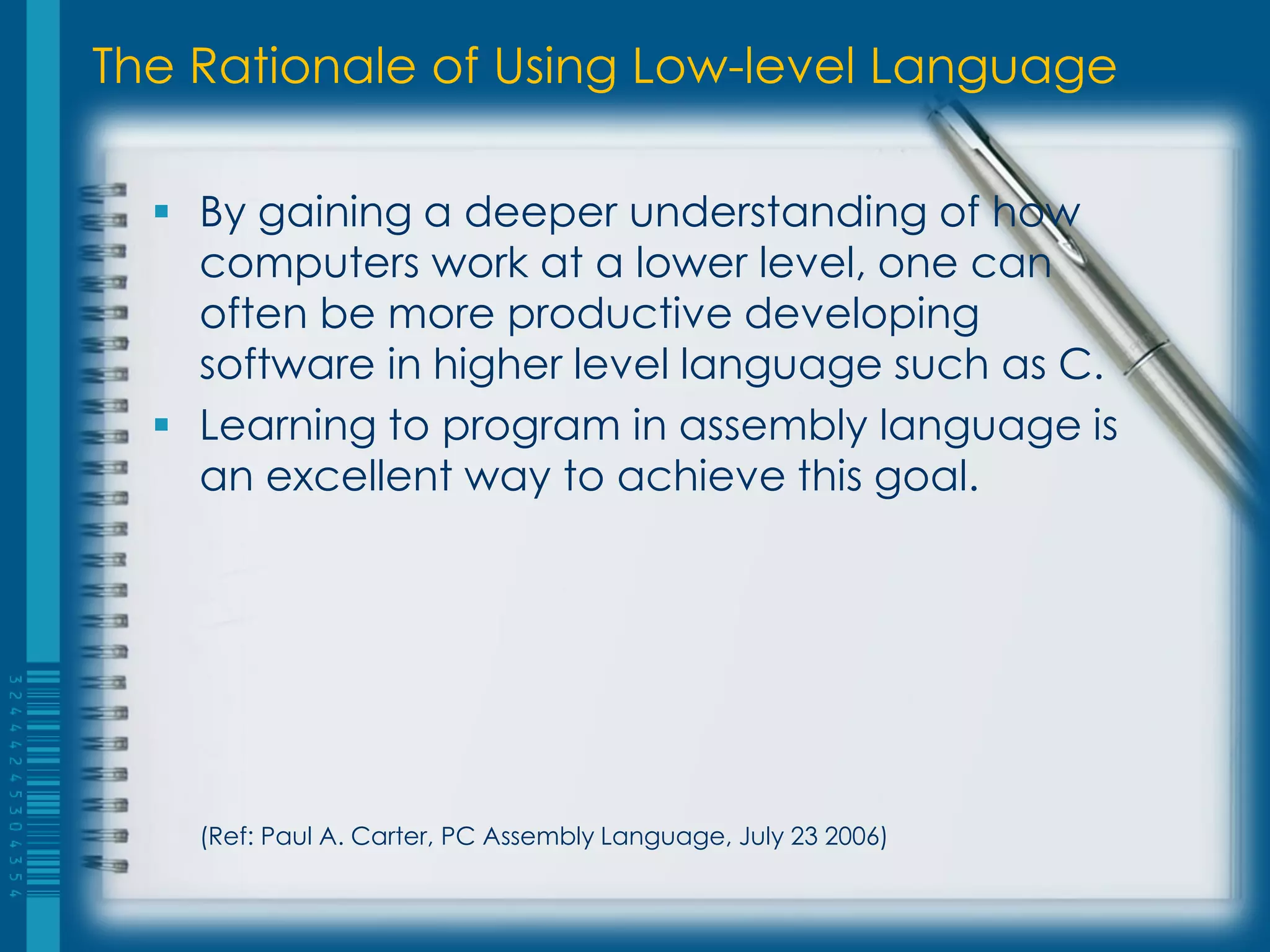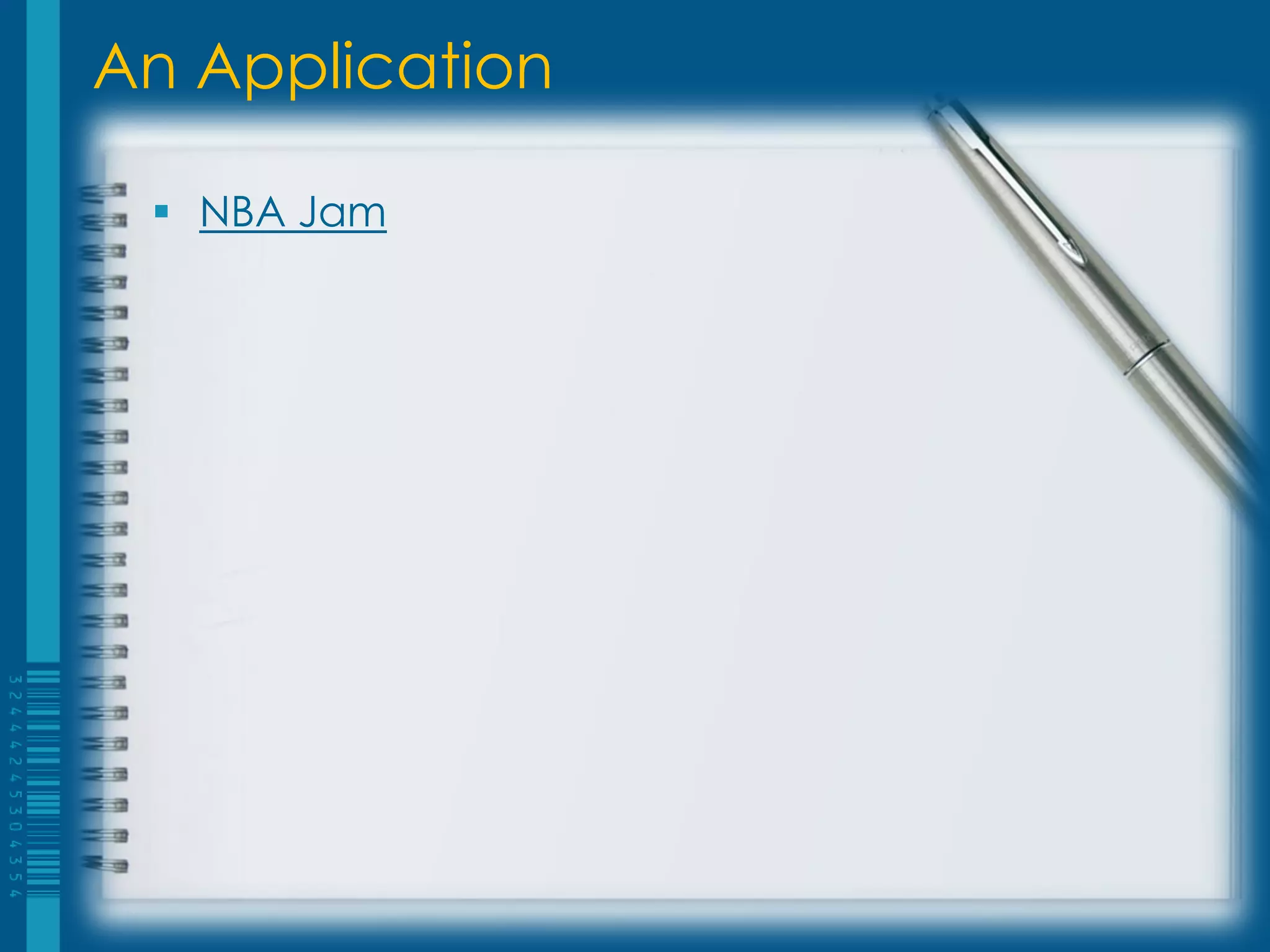The document describes the basic organization of a microcomputer system and Von Neumann architecture. It explains that a microcomputer consists of a CPU, memory, input/output and that the CPU contains an ALU, control unit and register file. It describes the fetch-decode-execute cycle where the CPU fetches instructions from memory and executes them. It also discusses machine code, assembly language and different levels of programming languages from machine code to high-level languages. Finally, it provides the rationale for using low-level languages like assembly to understand computer hardware and develop certain system software.
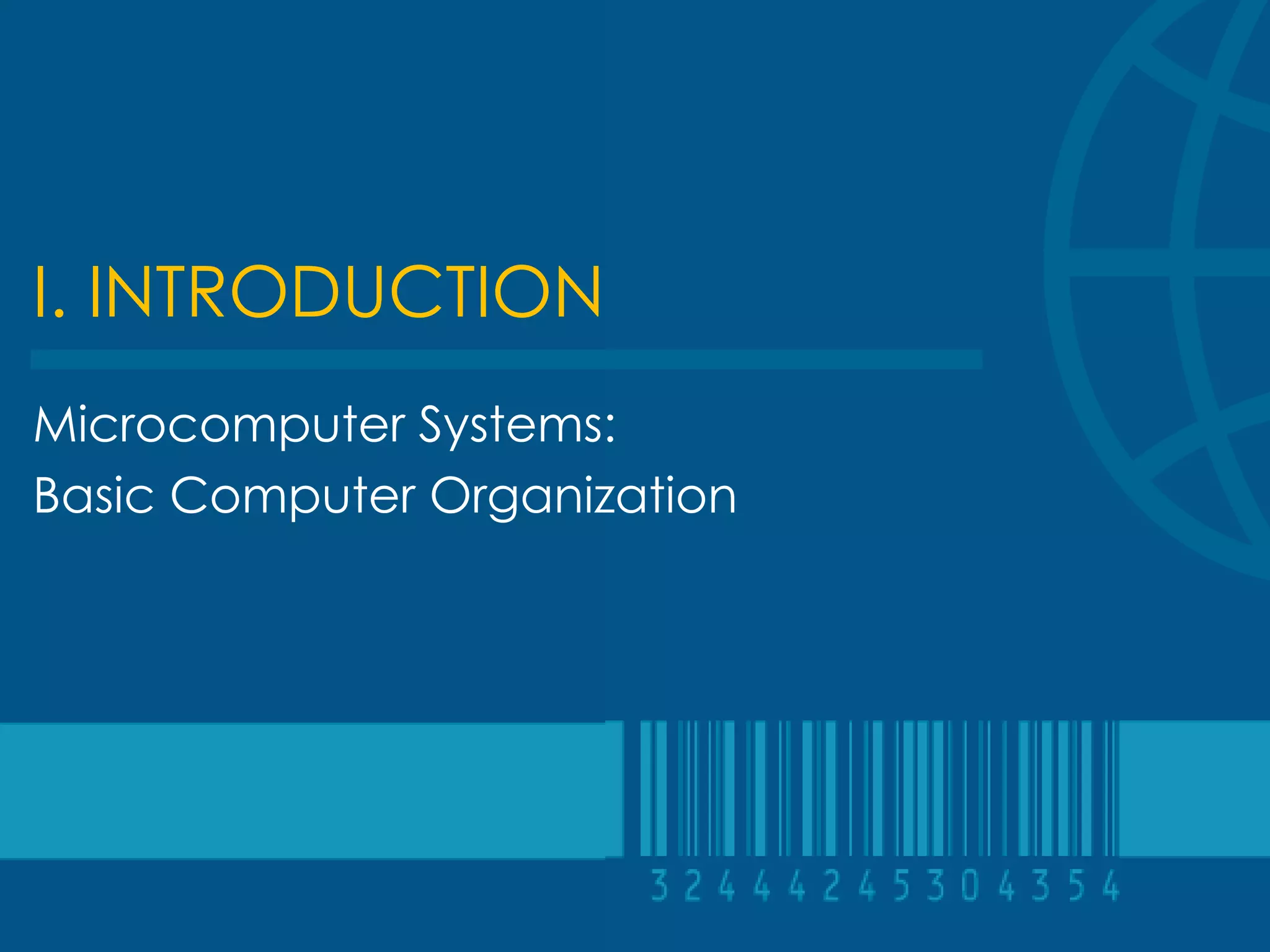
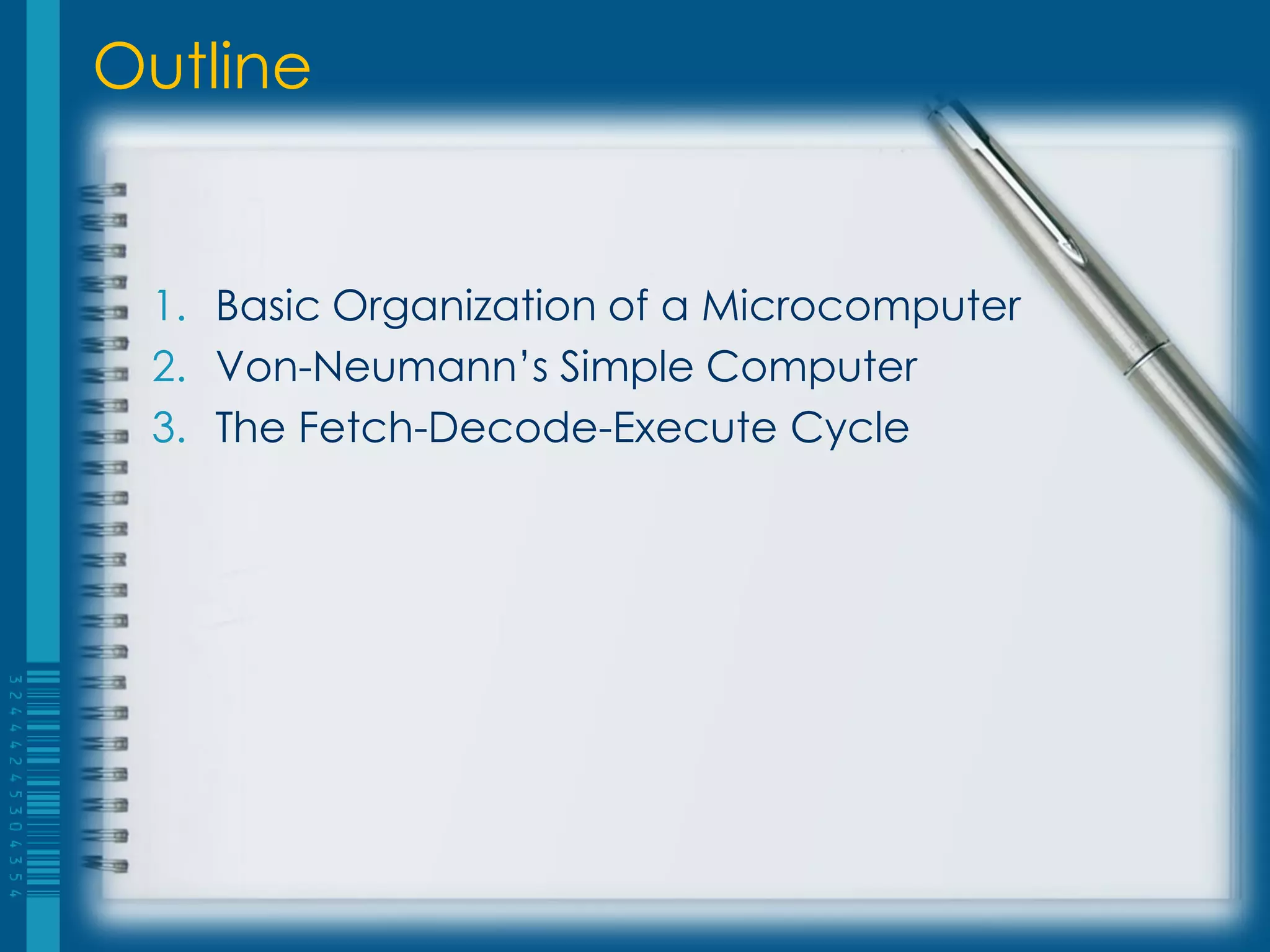
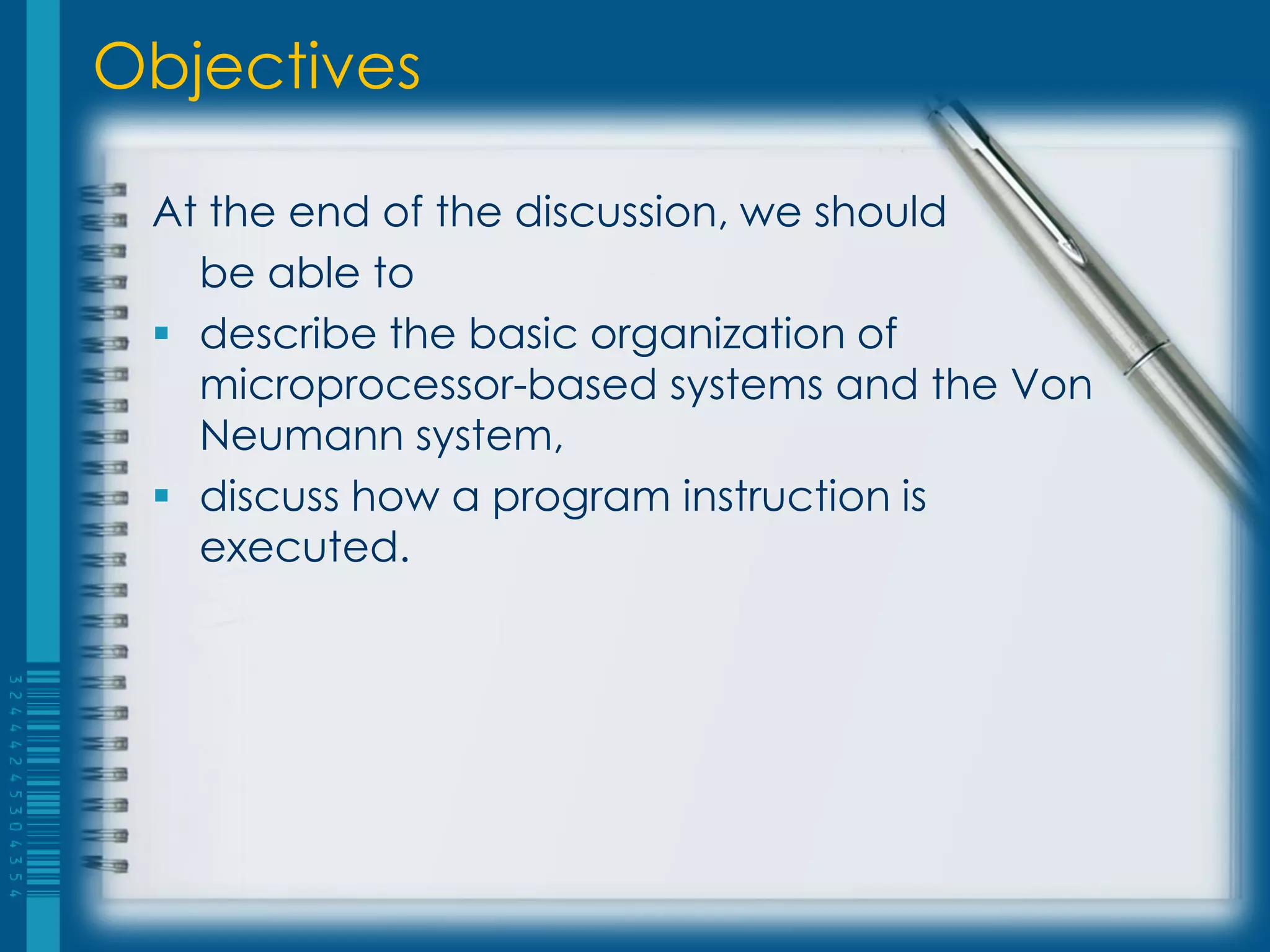
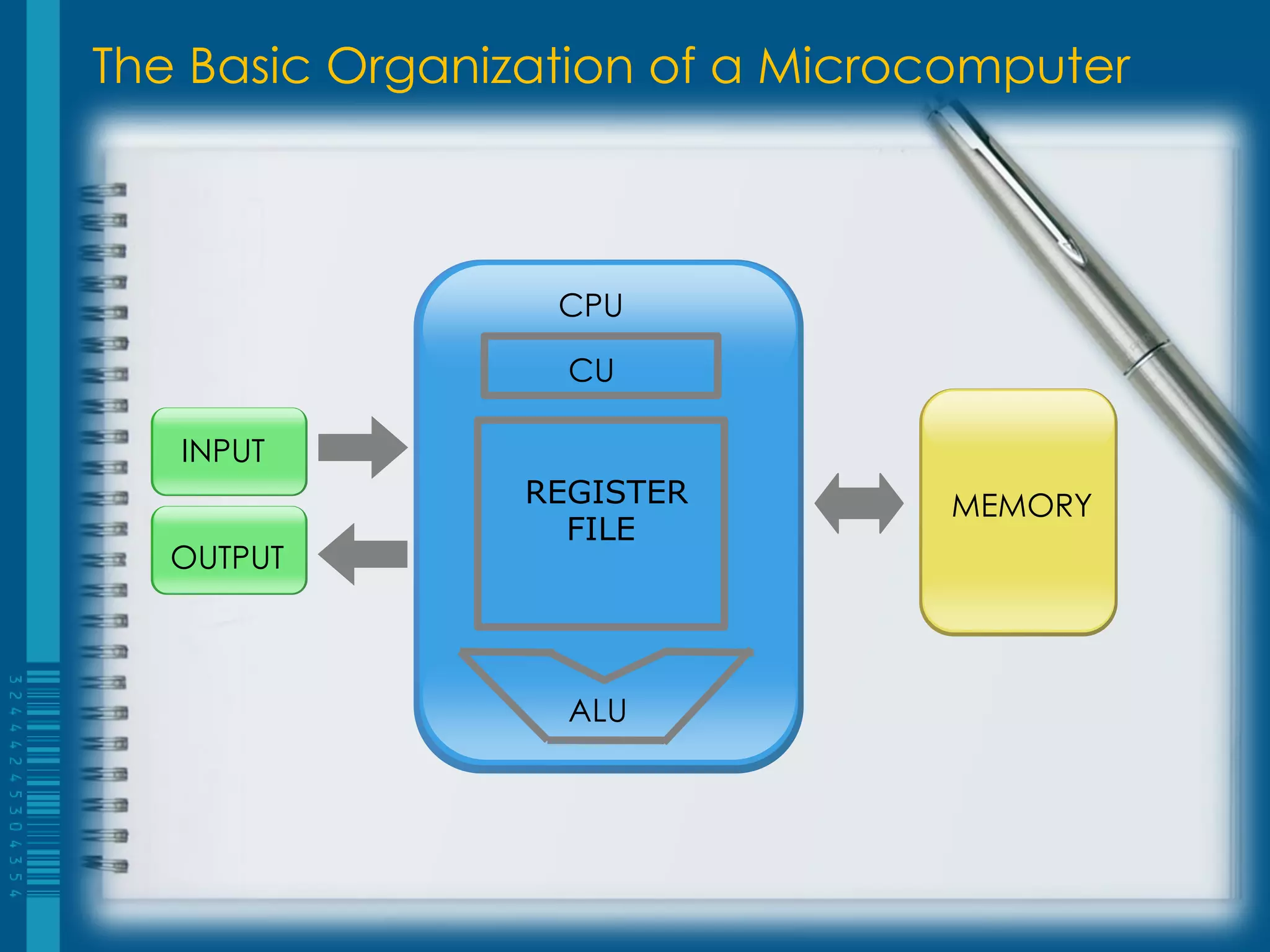

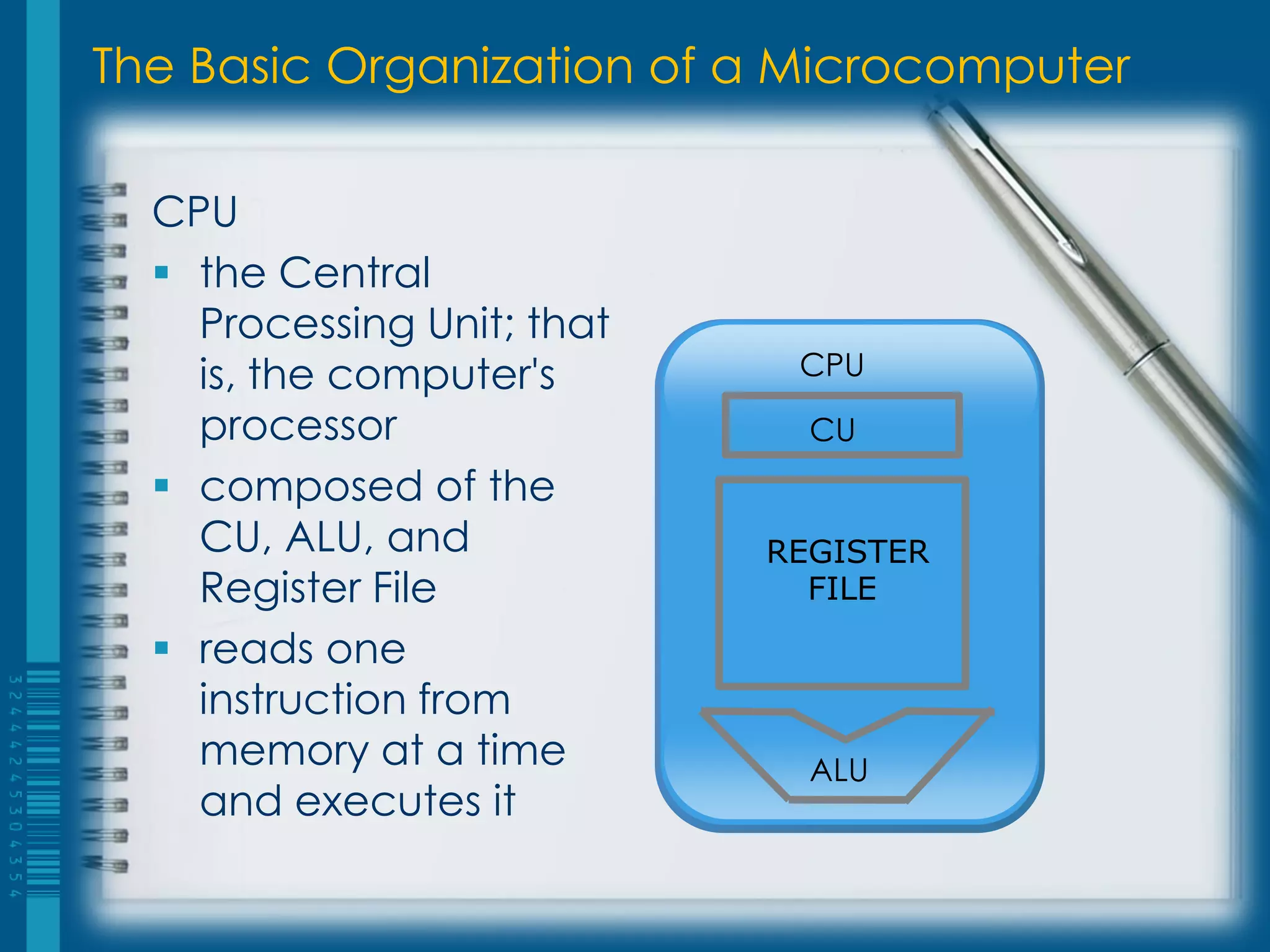
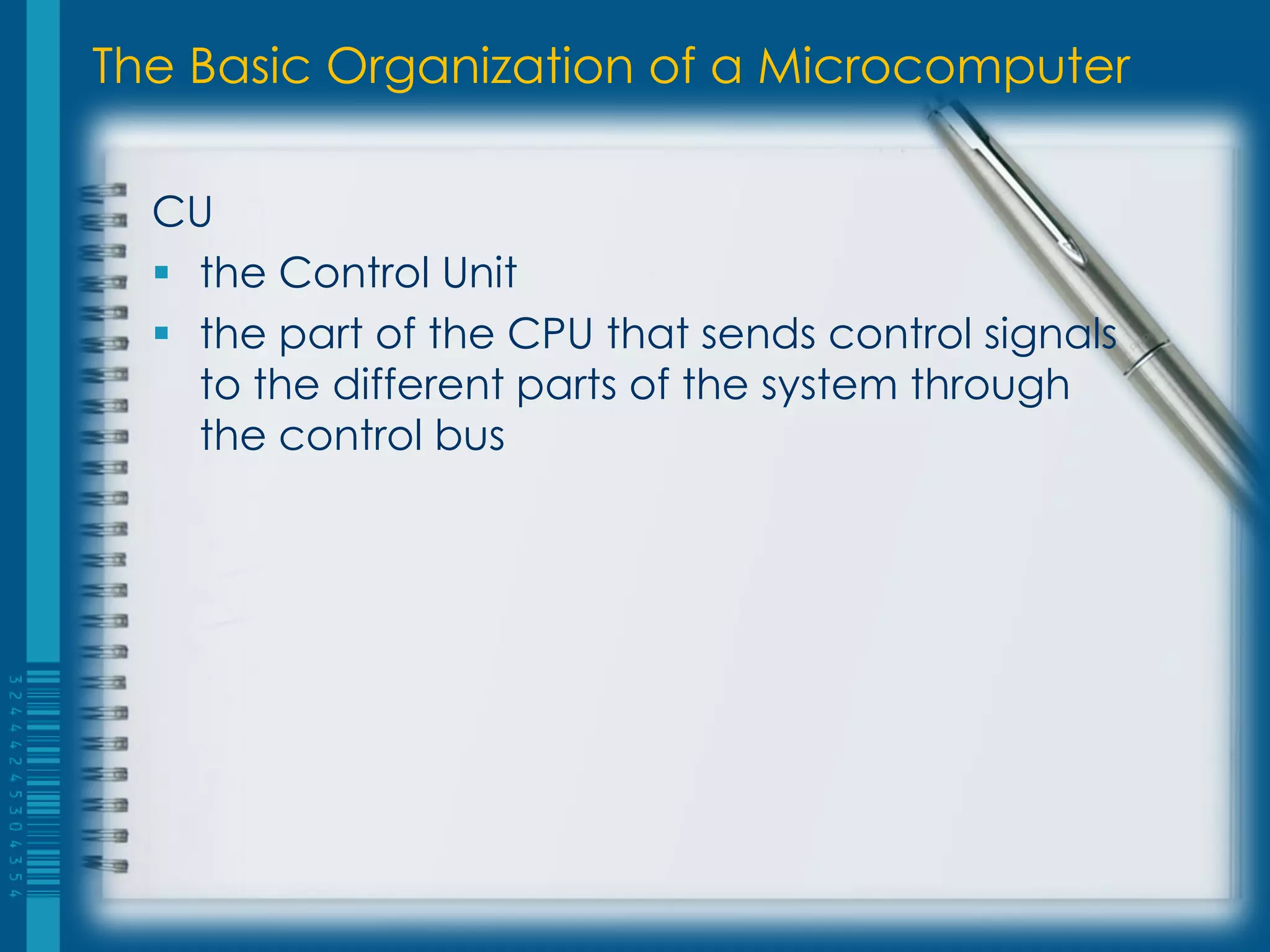

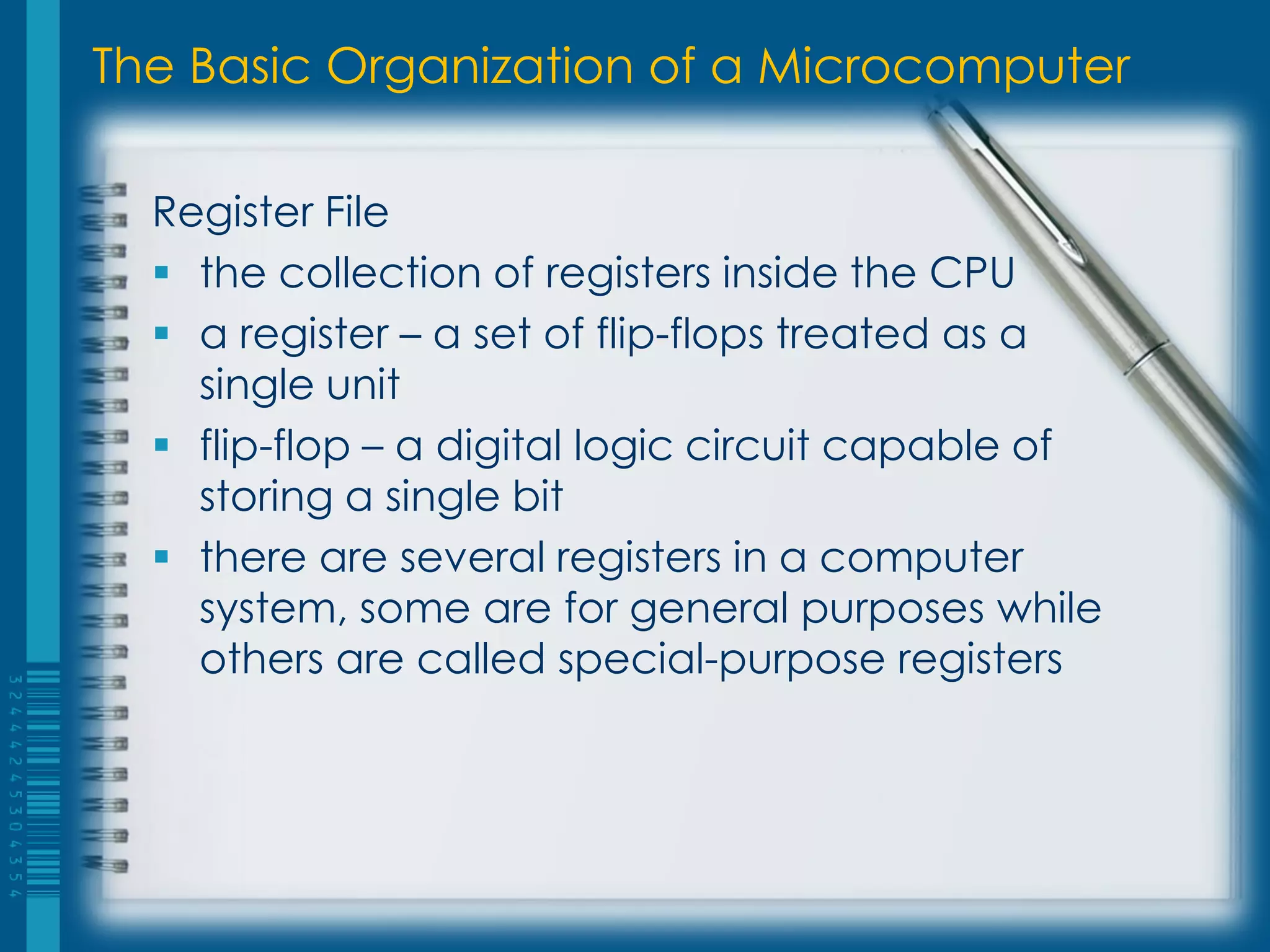
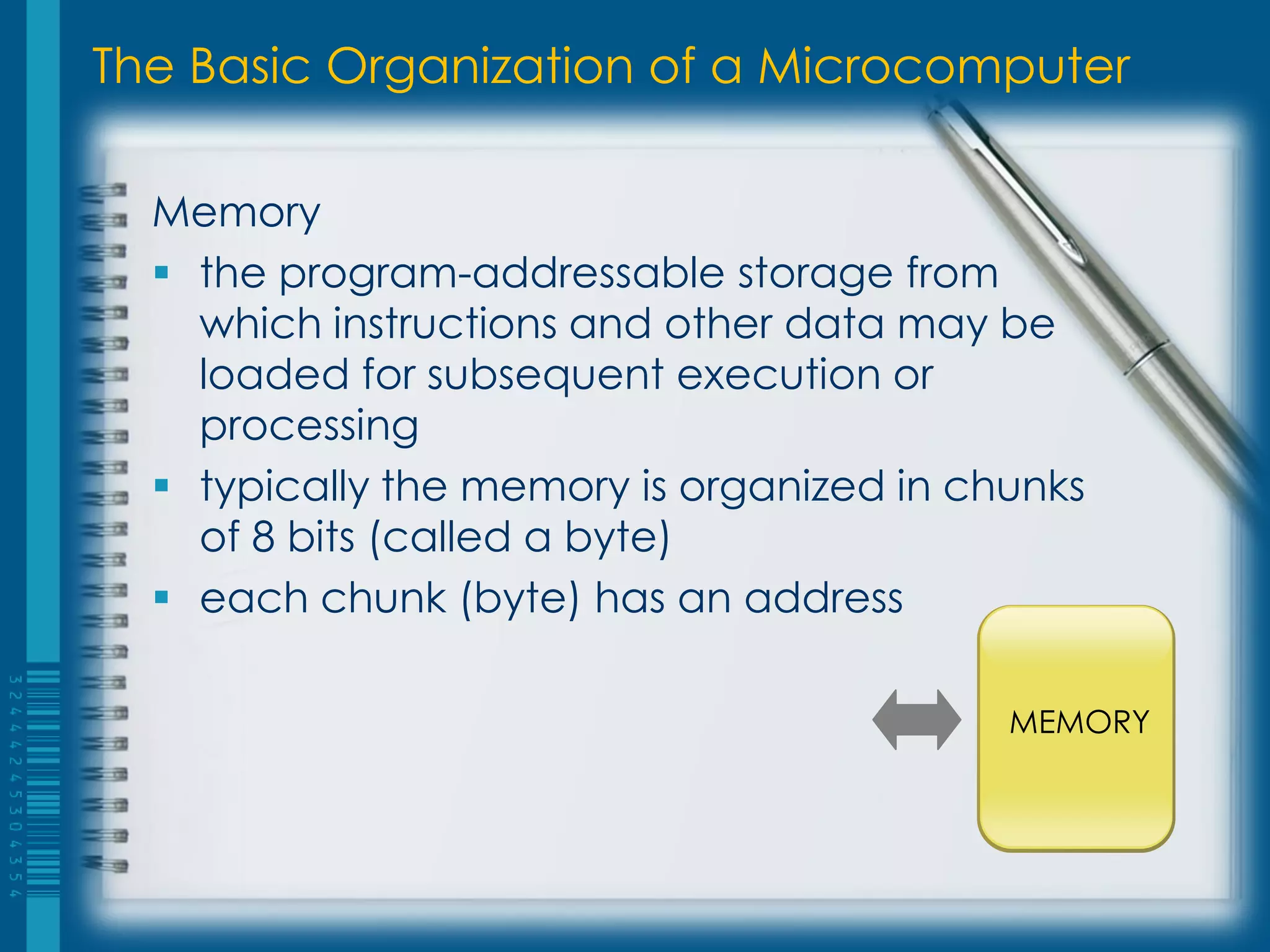
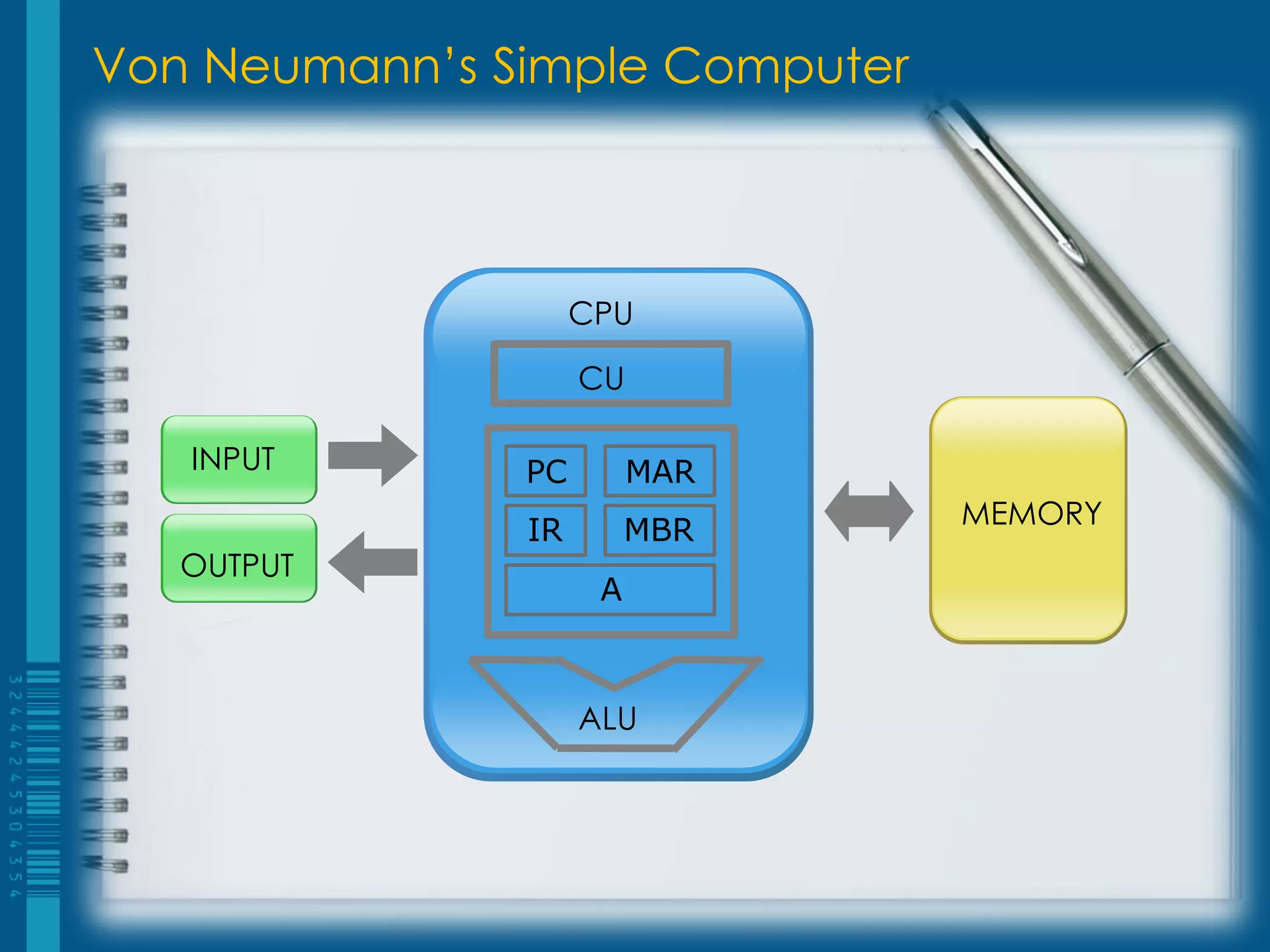

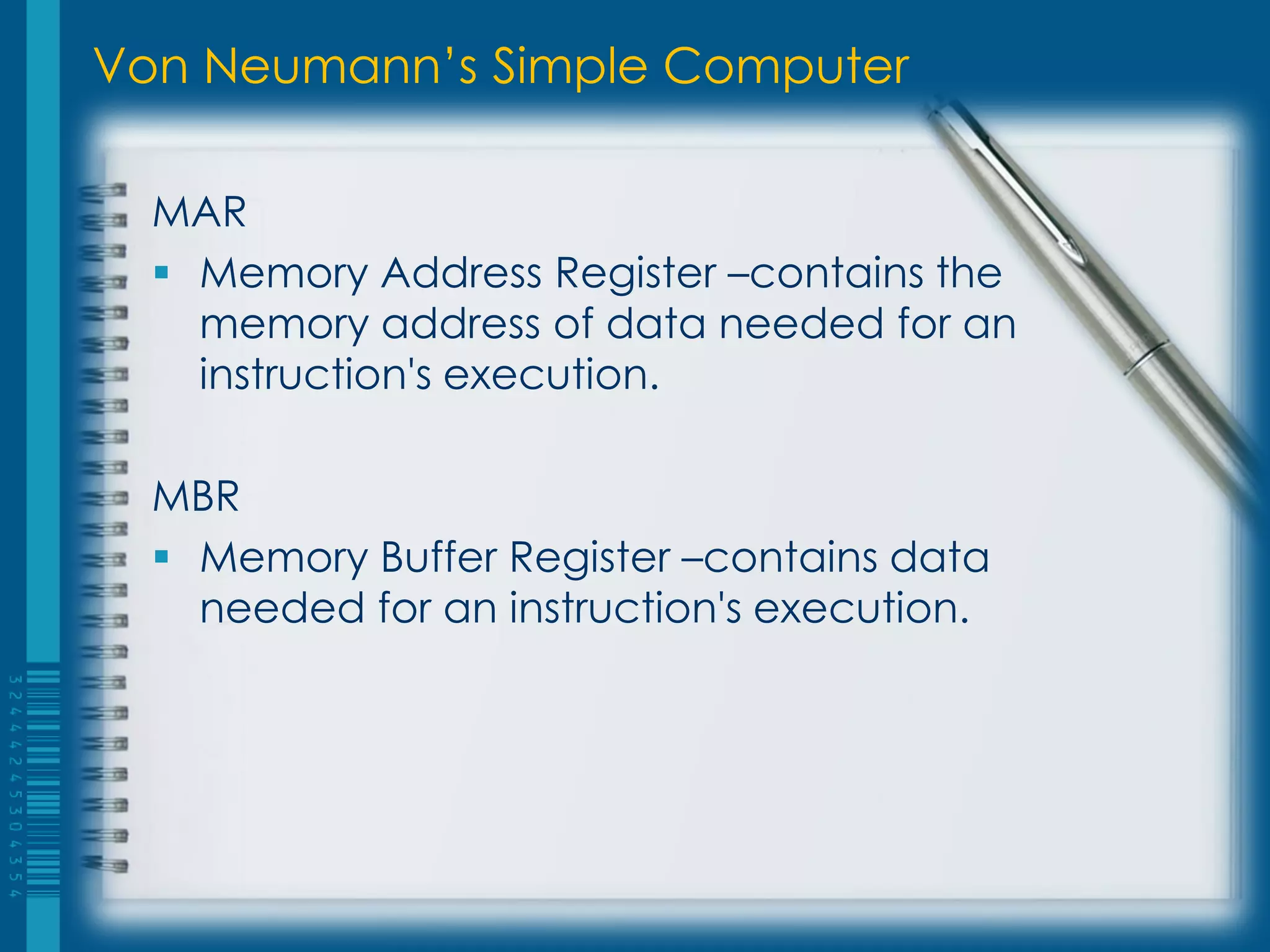
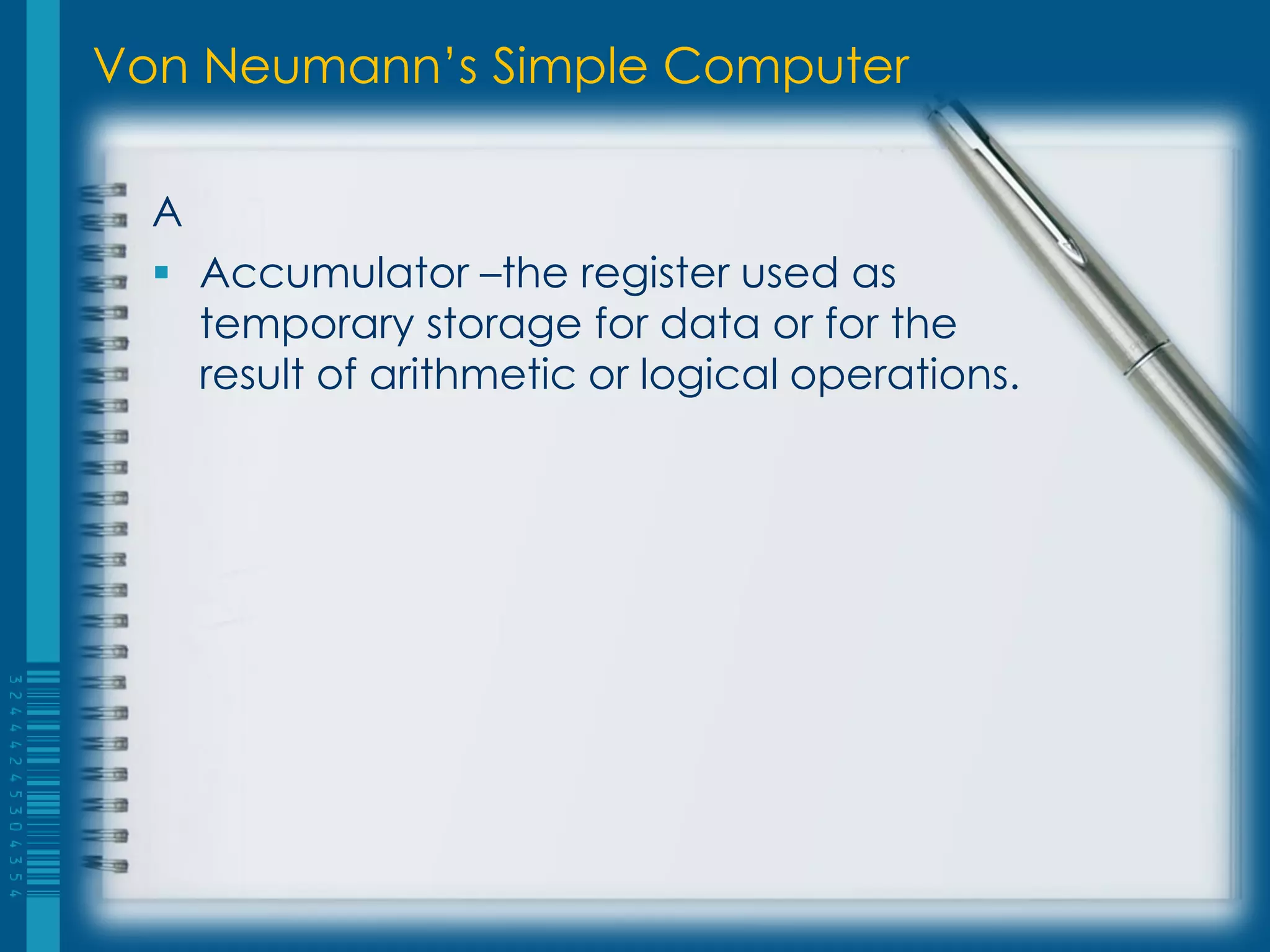
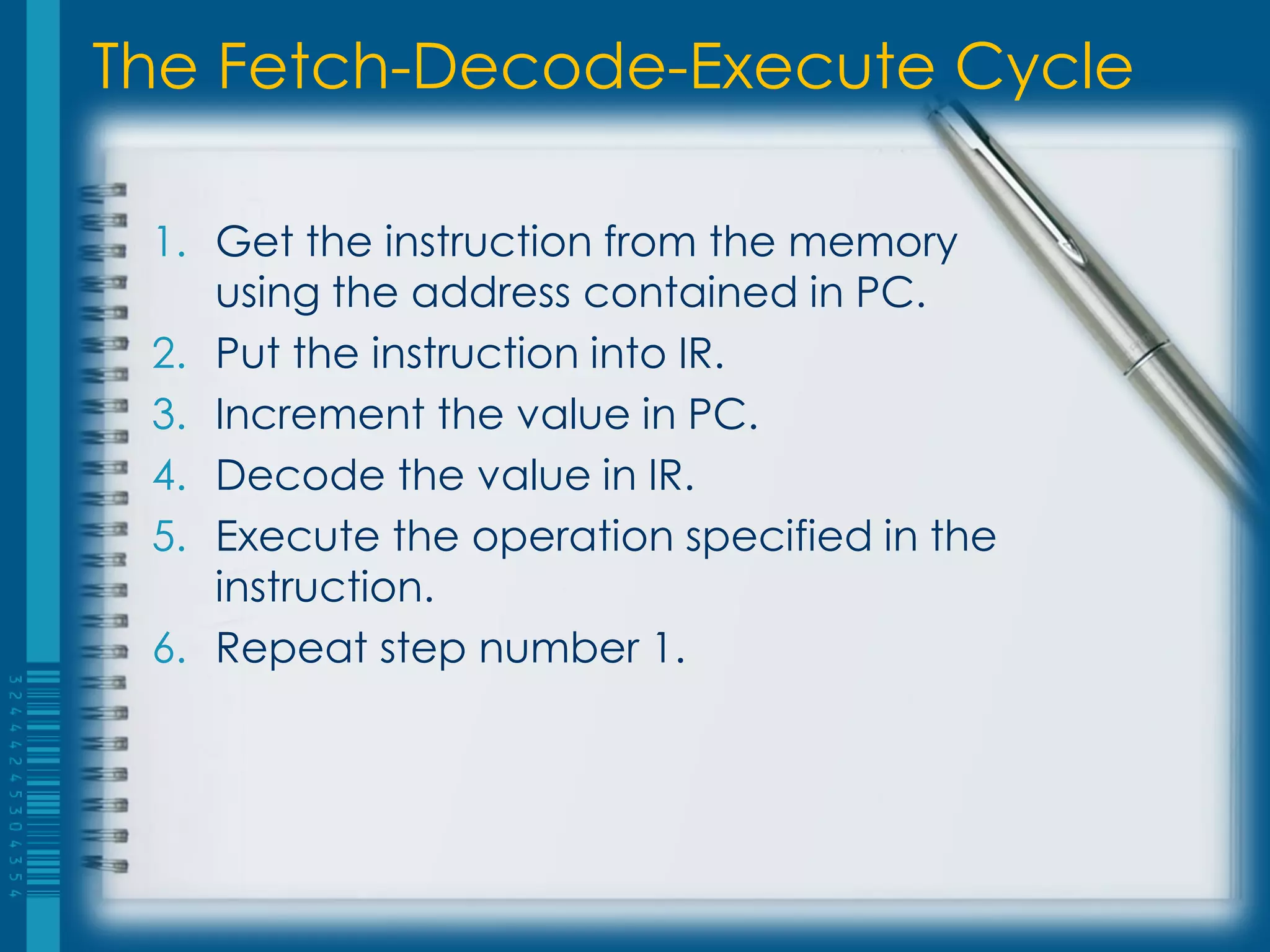
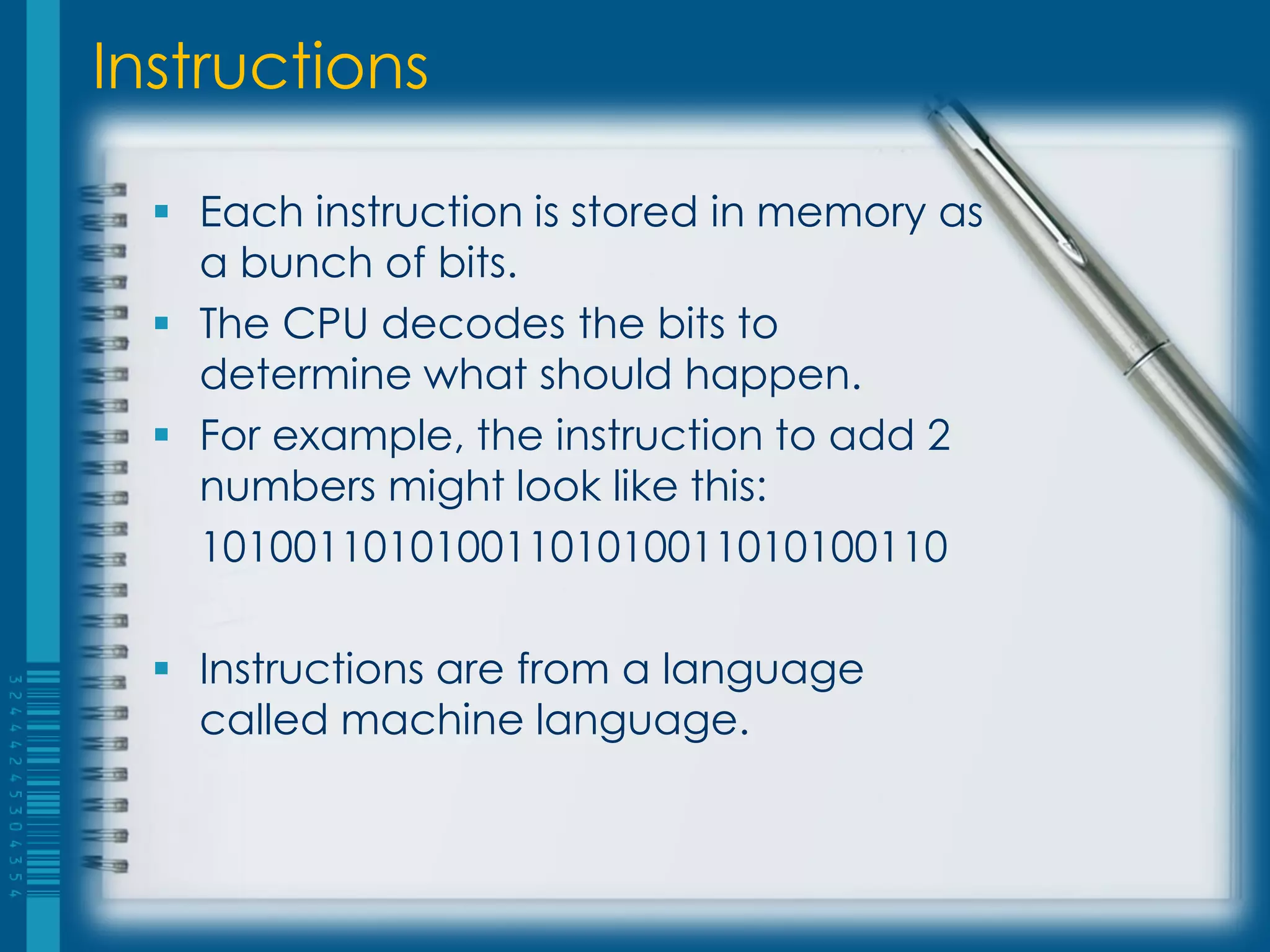
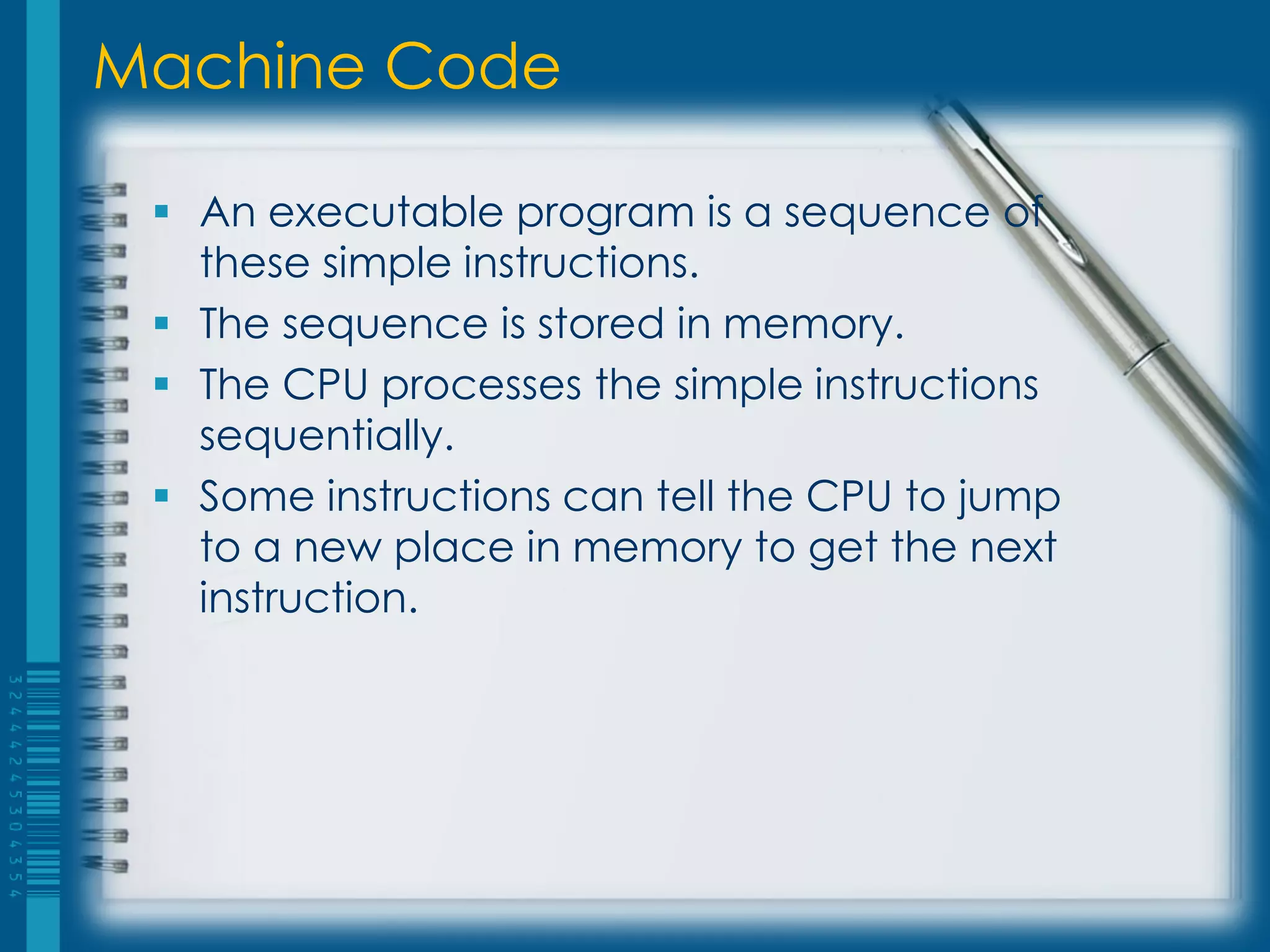
![Sample Program
# Instruction
1. set memory[801] to hold 00000001
2. set memory[802] to hold 00000000
3. if memory[802] = 10 jump to instruction #8
4. increment memory[802]
5. set memory[803] to 2 times memory[801]
6. put memory[803] in to memory[801]
7. jump to instruction #3
8. print memory[801]](https://image.slidesharecdn.com/chapter1a-120918111328-phpapp02/75/Chapter1a-18-2048.jpg)
